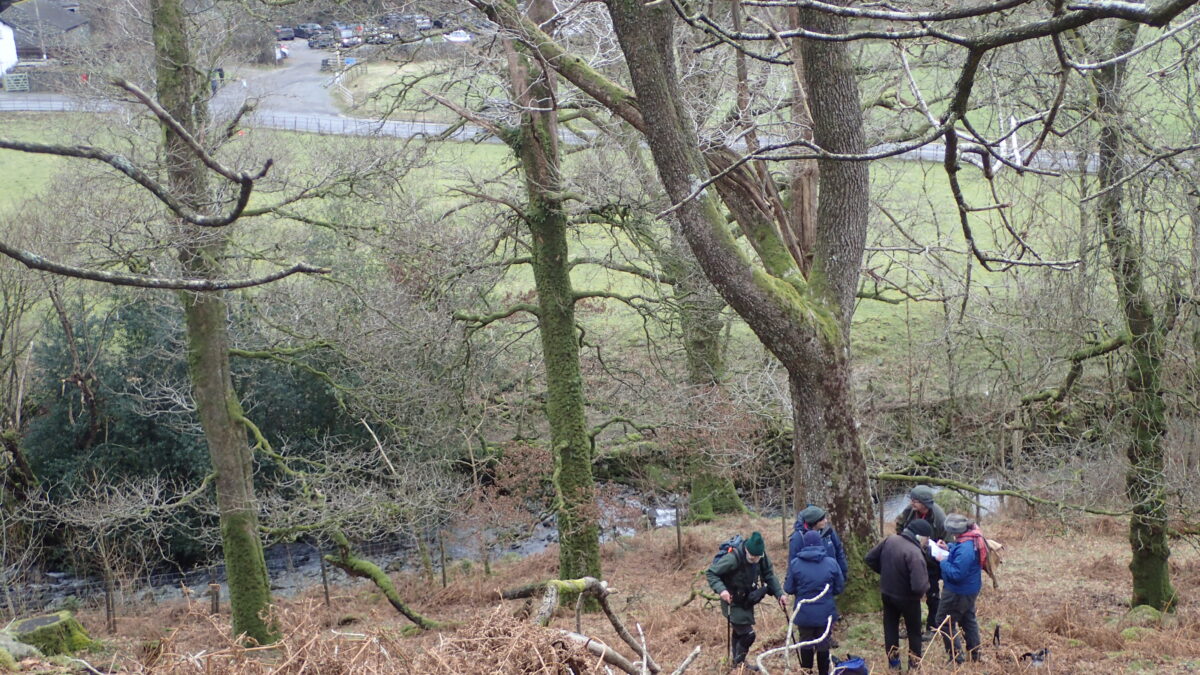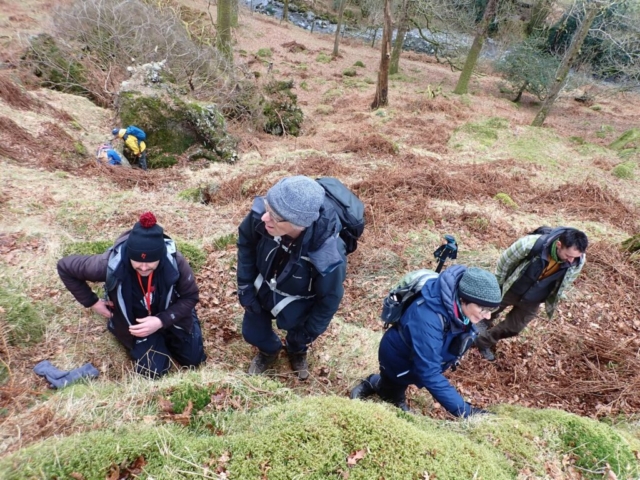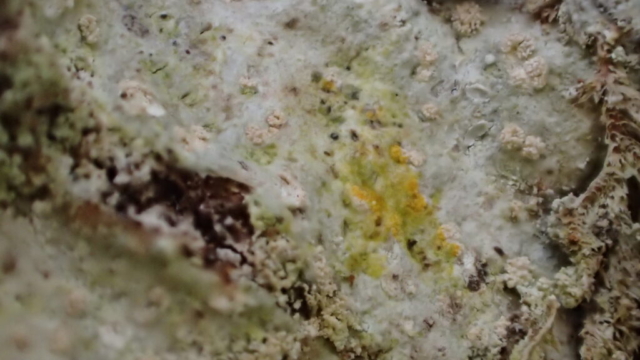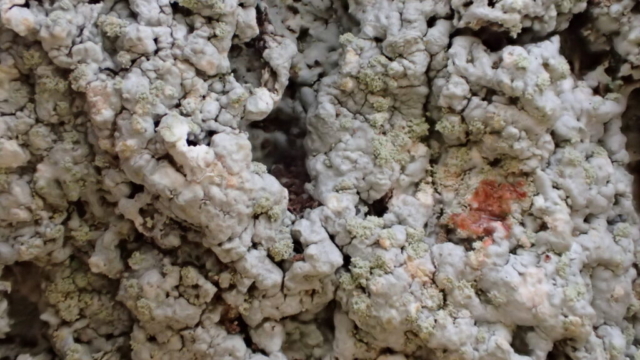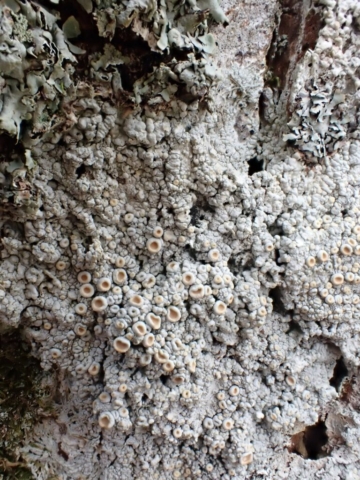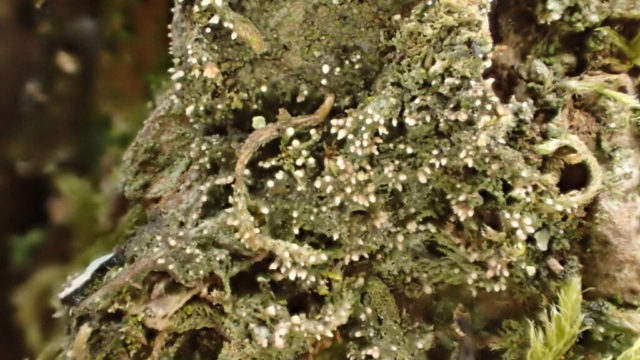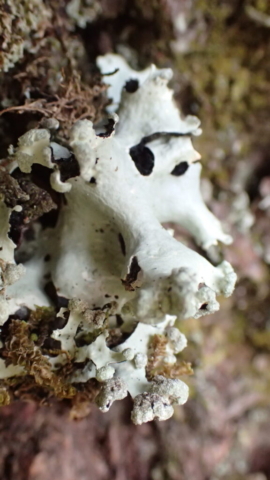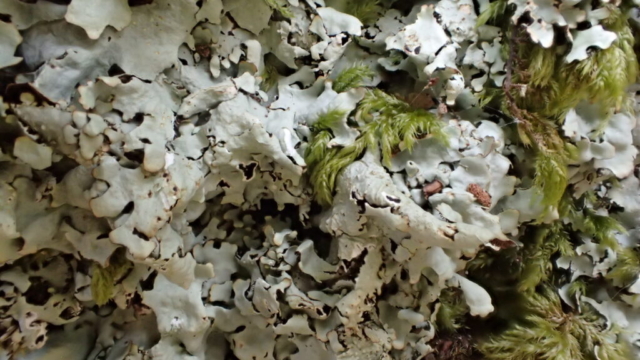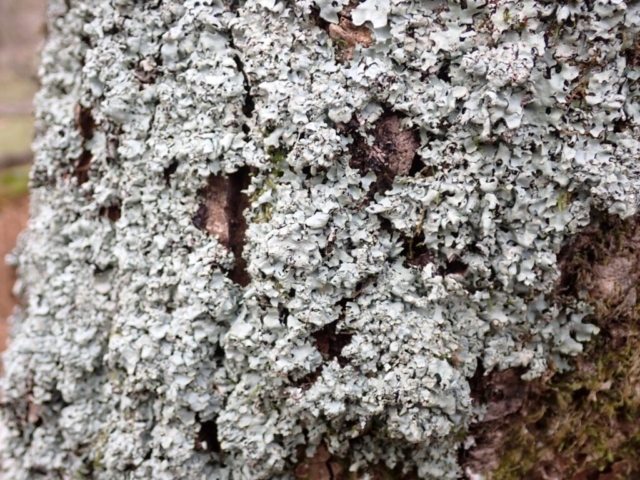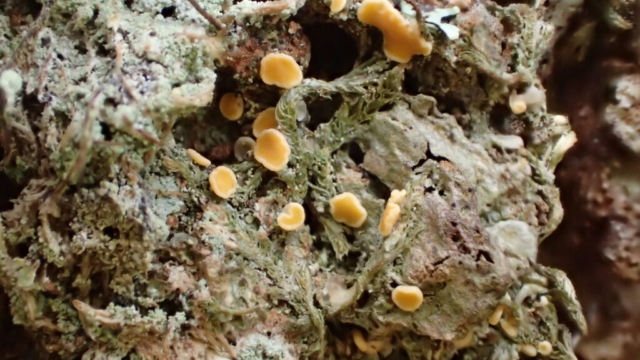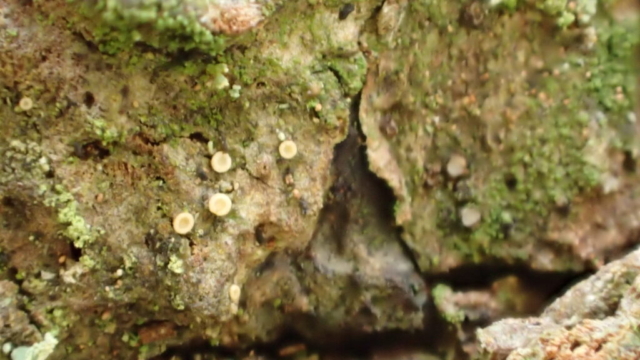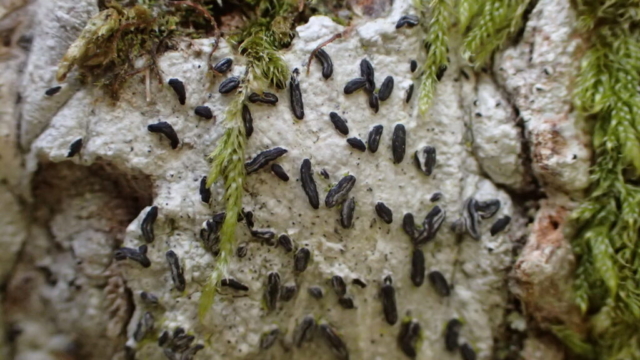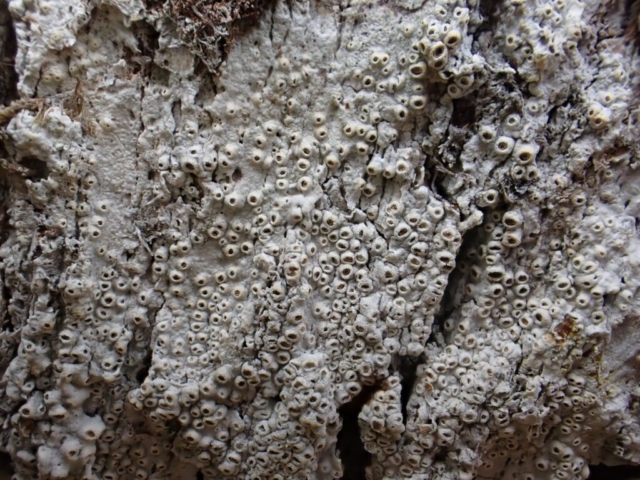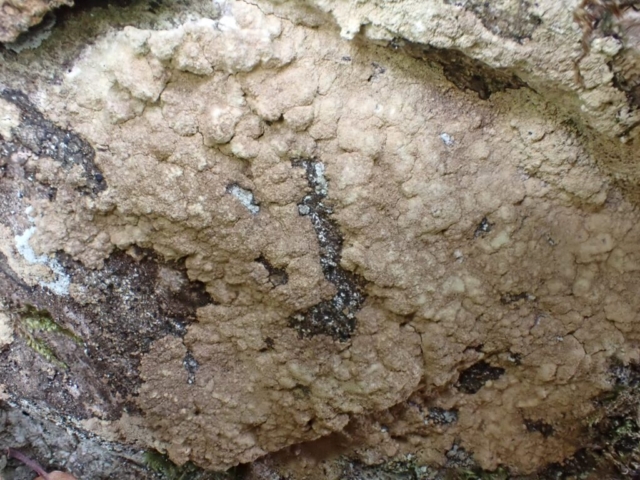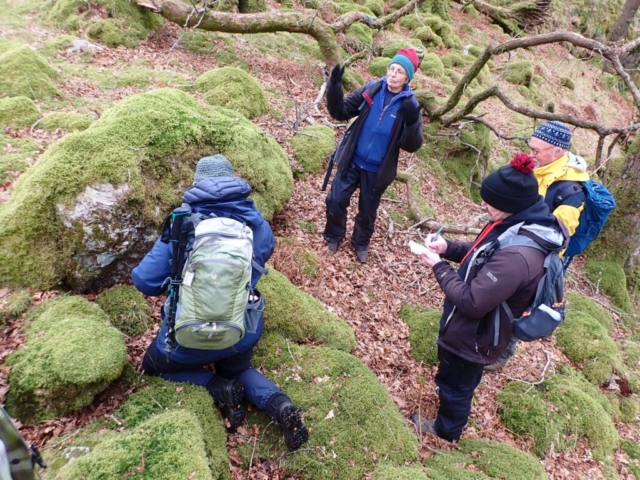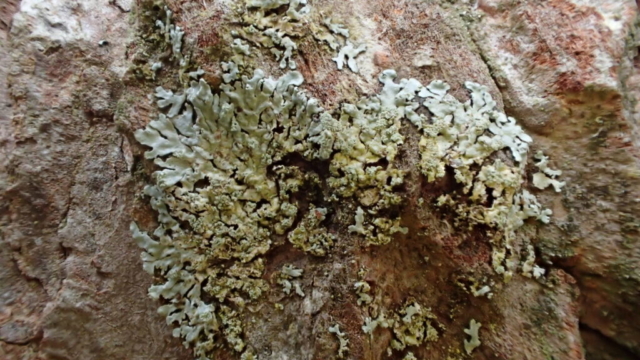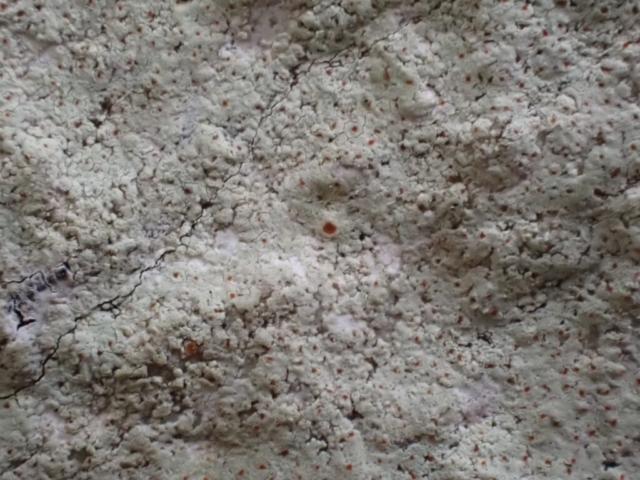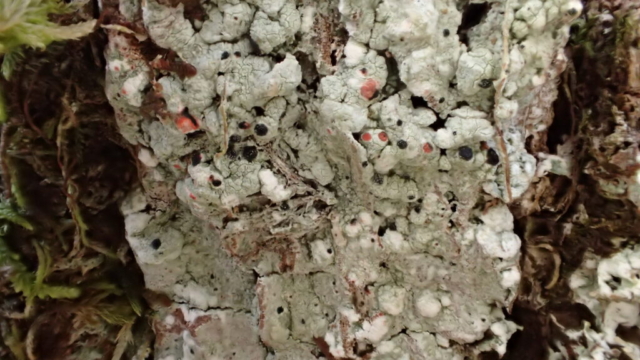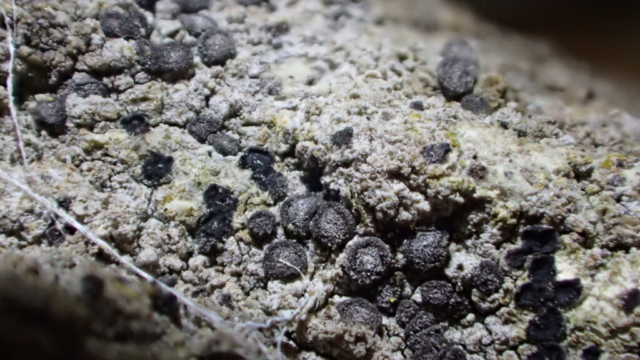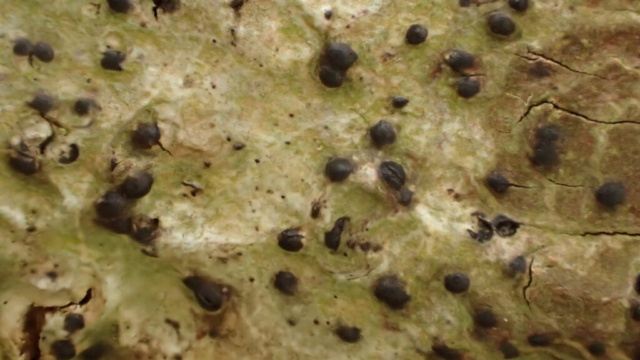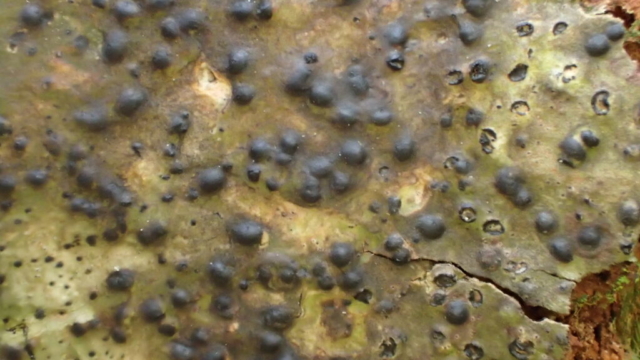Francis Rose called the woods along the Seathwaite Road “the most important … lichenologically in northern England”. Having been several times, it is apparent that a major factor in this is that there are several different pockets within the woodland, each with different rock types, tree species and lichen communities present. Each pocket is interesting, good or even better… add them all together and you get the superlative.
All my past visits had been to the lower slopes between the bridge and the Borrowdale yews: the ancient ash and other pollards have some truly remarkable Lobarion communities. This time, however, we decided to look at the area nearer to Seatoller, where oak woods extend up the slope. So we turned through the first gate over the bridge and immediately found Schizotrema quercicola, with pinky soredia and a P+ orange reaction. Nearby trees had clumps of the coral lichen, Sphaerophorous globosus, and Ochrolechia androgyna. There was Usnea cornuta on one oak.
That’s the Usnea being on just one tree. Virtually all the trees were oaks in this lower part of the wood. Some were old and quite bulky, but many looked to be the same sort of age. There appeared to be no regeneration, or understorey, thanks presumably to the level of grazing. Almost all the lichens we found were indicative of acid bark: one tree had Hypotrachyna taylorensis, Micarea stipitata, Ochrolechia tartarea and both Coenogniums: luteum and pineti. Nearby, we found the first H. laevigata of the day.
Just a little higher, we found what we presumed ( and was later confirmed by microscopy) to be Allographa anomala (used to be Graphis or Graphina ruizana) with raised lirellae (fancifully likened by someone to burnt sausages). There was Mycoblastus caesius too. Schismatomma umbrinum was found on the underhang of a boulder: its cushioned thallus was almost spongy. Somewhat strangely there didn’t seem to be a lot of Usnea (or Evernia or much of any lichen in fact) in the canopy- we’d have thought more would have been brought down in recent storms. The fallen trees didn’t seem to have a lot either.
After lunch we climbed higher, and crossed the wall into High Stile Wood, spotting Parmeliopsis hyperopta on a larch. There was Thelotrema now (the yellow medulla suggested lueckingii rather than lepadinum) in profusion on some trees. And the sheer amount of Hypotrachyna taylorensis was making itself felt: I became almost blasé about it. I could easily have seen more in that one afternoon then ever in total before. It’s a strange lichen with no apothecia, soredia or isidia. Presumably it is spread round by bits breaking off and being carried to a new tree (or rock- it will grow on mossy rocks too). We discussed the common name it is sometimes given: Tumbling Kittens. We got the tumbling but kittens? What happened to the rule that all lichen analogies have to be food-related?
We reached the top of the wood, having found Mycoblastus sanguinarius once. That took my personal Upland Rainforest Index score for the day to 9 – I’m sure that if I had taken samples I’d have made it to the magic 10 because that looked very much like Bryobilimbia sanguineotara but I’m not quite confident enough to identify it on sight.
Rocks about the trees had Haematomma ochroleucum, Pilophorus strumaticus and there was some Peltigera hymenina too. Chris and Caz later identified Psoronactis (Lecanactis) dilleniana from a wall.
Up towards the top of the wood there were more hazels. One boasted a badger skull underneath it. Coming down, on a slightly more southerly line, sharp eyes noticed something different: a Pyrenula. Discussion, with the LGBI3 key handy to refer to on a phone, ensued. The perithecia were too big for P. chlorospila; there were no pseudocyphellae; a lot of the ostioles were on the side of the perithecia rather than in the centre. The thalli appeared perhaps less waxy, possibly more browny than others. We decided it was P. acutispora, a new one for me, but not for the site.
By then the light was beginning to fade in the woods, so we descended and headed slowly back to the car park after a very enjoyable day. Having missed the last few trips because of poorliness it was great to be out with the group again.
Text: Pete Martin
Photos: Chris Cant, Pete Martin
